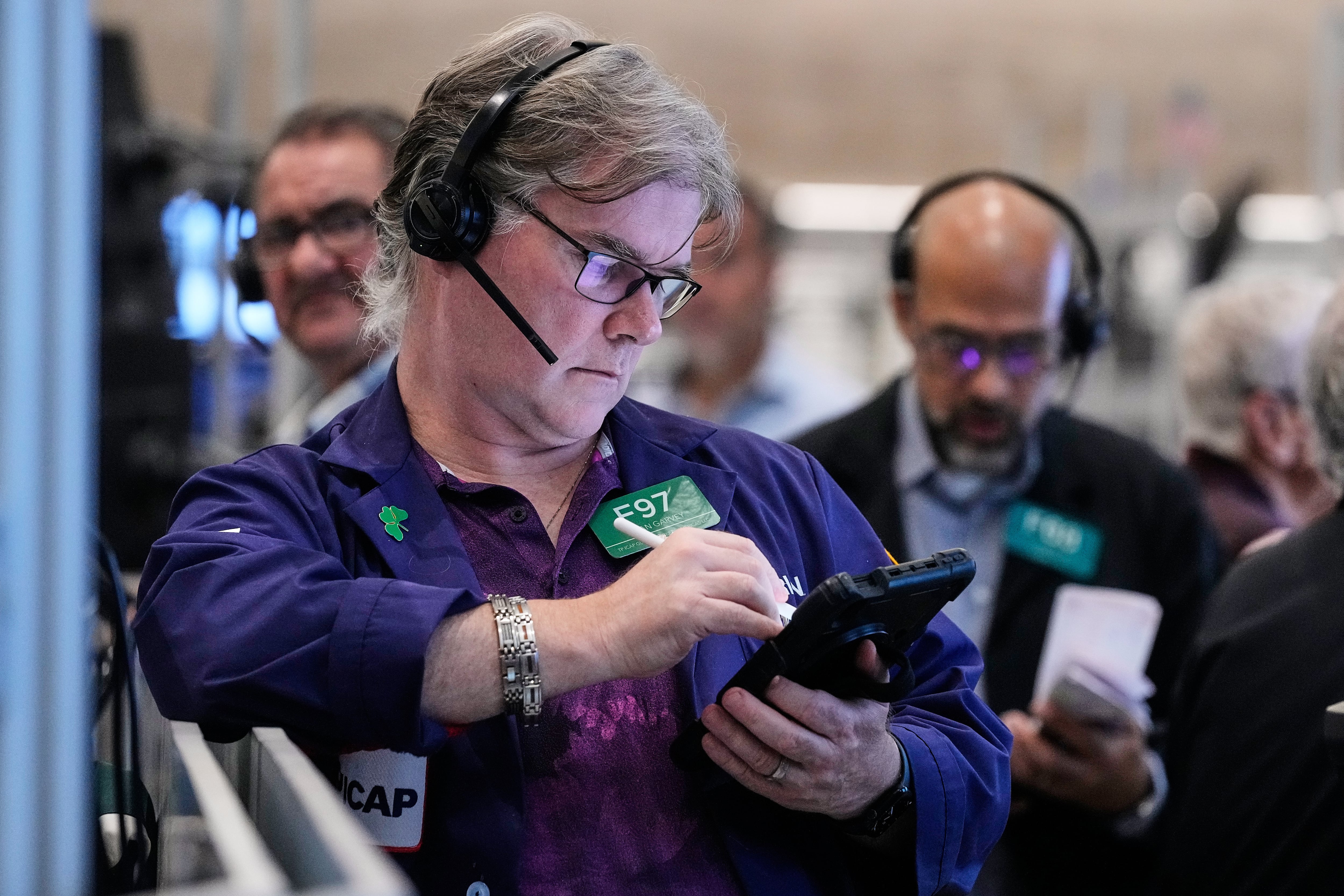WASHINGTON (AP) — U.S. inflation accelerated last month as the cost of groceries, gasoline and rents rose, a disappointment for families and businesses struggling with higher costs and likely underscoring the Federal Reserve’s resolve to delay further interest rate cuts.
The consumer price index increased 3% in January from a year ago, Wednesday’s report from the Labor Department showed, up from 2.9% the previous month. It has increased from a 3 1/2 year low of 2.4% in September.
The new data shows that inflation has remained stubbornly above the Fed's 2% target for roughly the past six months after it fell steadily for about a year and a half. Elevated prices turned into a major political hurdle for former President Joe Biden. President Donald Trump pledged to reduce prices on “Day 1" if elected, though most economists worry that his many proposed tariffs could at least temporarily increase costs.
The unexpected boost in inflation could dampen some of the business enthusiasm that arose after Trump's election on promises to reduce regulation and cut taxes. The Dow fell 400 points in mid-day trading Wednesday. Bond yields rose, a sign traders expect inflation and interest rates to remain high.
“We're really not making progress on inflation right now,” Sarah House, senior economist at Wells Fargo. “This just extends the Fed's hold.”
Inflation often jumps in January as many companies raise their prices at the beginning of the year, though the government’s seasonal adjustment process is supposed to filter out those effects.
Yet House said inflation's stubbornness wasn't just a one-month blip. Consumers — particularly wealthier ones — are still spending at a robust pace, giving many companies less reason to hold down prices. And much of the decline in inflation in 2023 and early last year stemmed from supply-chain improvements, but that trend has mostly played out.
Excluding the volatile food and energy categories, core consumer prices rose 3.3% in January compared with a year ago, up from 3.2% in December. Economists closely watch core prices because they can provide a better read of inflation's future path.
Inflation also worsened on a monthly basis, with prices jumping 0.5% in January from December, the largest increase since August 2023. Core prices climbed 0.4% last month, the most since March 2024.
Grocery prices climbed 0.5% just in January, pushed higher by a 15.2% surge in egg prices, the biggest monthly increase since June of 2015. Egg prices have soared 53% compared with a year ago.
An avian flu epidemic has forced egg producers to cull from their flocks about 40 million birds in December and January. Stores have imposed limits on egg purchases and restaurants have placed surcharges on egg dishes.
The cost of car insurance continues to rise, and picked up 2% just from December to January. Hotel prices rose 1.4% last month, while the cost of a gallon of gas moved up 1.8%.
Trump’s tariffs are making life more complicated for Phil Hannon, vice president of operations at Abt, a consumer electronics store in Glenview, Illinois. Roughly 60% of Abt’s sales are appliances, big and small. The rest are in consumer electronics like TVs and computers, and furniture.
Hannon expects to raise prices between 3% and 15% as soon as March to offset the impact of tariffs, including the steel and aluminum duties.
He’s received notices from vendors over the past two weeks warning about eventual price increases, though they’re not specific. To get ahead of the cost increases, Hannon has been locking in orders from suppliers for up to 90 days.
Hannon said that many customers are already asking about price increases and when the tariffs are coming. He started seeing a noticeable pickup of customers ordering products like washing machines this month to get ahead of the tariffs.
Separately, Fed Chair Jerome Powell said Wednesday in testimony before the House Financial Services Committee that the Fed “has made great progress” on inflation “but we're not quite there yet."
"Today's inflation print ... says the same thing," he added. As a result, the Fed wants to keep rates “restrictive for now," he said. At its current level, the Fed's key rate is restricting borrowing and spending by consumers and businesses, Powell has said.
With inflation down significantly from its 9.1% peak in June 2022, the Fed cut its rate to about 4.3% in its final three meetings last year. It raised its benchmark rate in 2022 and 2023 to a two-decade high of 5.3% to combat inflation.
The Fed’s rate typically influences other borrowing costs for everything from mortgages to credit cards.
Early Wednesday, Trump said on social media that interest rates should be lowered, “something which would go hand in hand with upcoming Tariffs!!!” Yet the tick up in consumer prices makes it less likely the Fed will cut rates anytime soon.
One sign of concern for economists is that goods prices, excluding food and energy, rose 0.3% in January from the previous month. Prices for cars, furniture, and appliances had been flat or falling after supply-chain kinks stemming from the pandemic were resolved. Yet now those prices have ticked up even before tariffs have been launched.
Trump has imposed 25% tariffs on steel and aluminum, which could push the cost of cars, appliances, and industrial machinery higher. He also said earlier this week he would impose “reciprocal tariffs” on countries that have high duties on U.S. goods.
“There’s just a stew of uncertainty that if it lasts and lingers over the next couple months, you could see business confidence come down,” Anthony Saglimbene, chief market strategist at Ameriprise, said. That could reduce hiring and investment, he said.
On Tuesday, Powell acknowledged that higher tariffs could lift inflation and limit the central bank's ability to cut rates, calling it “a possible outcome.”
But he emphasized that it would depend on how many imports are hit with tariffs and for how long.
“In some cases it doesn’t reach the consumer much, and in some cases it does,” Powell said. “And it really does depend on facts that we we haven’t seen yet.”
___
AP Retail Writer Anne D’Innocenzio contributed to this report from New York.













